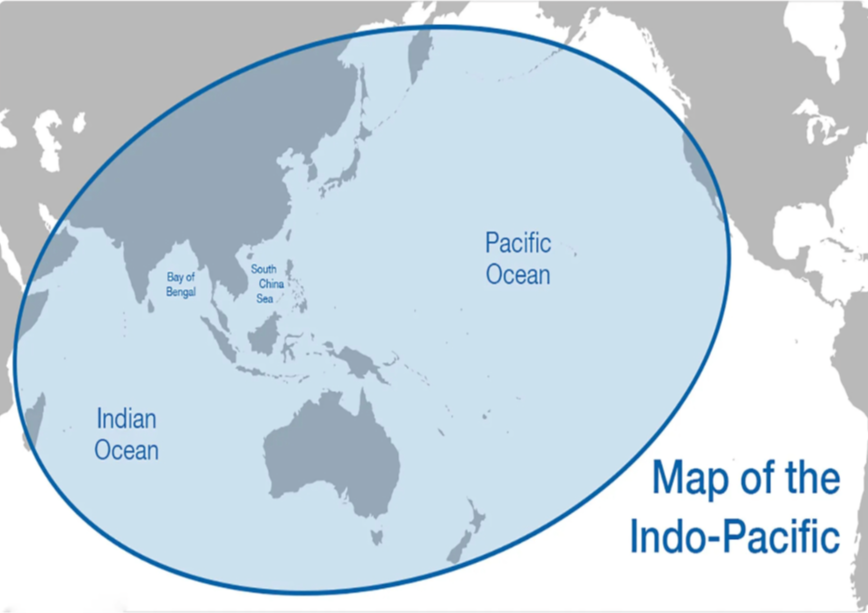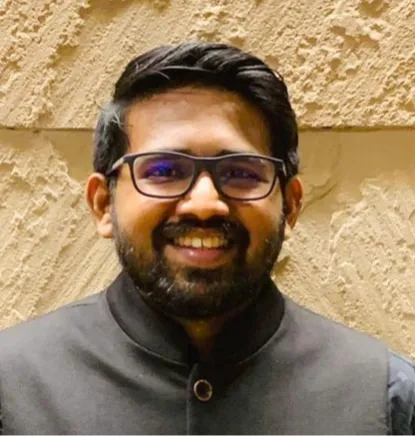-
CENTRES
Progammes & Centres
Location
India, the world’s largest democracy, and the United States (US), the world’s oldest democracy, are heading to elections this year. The elections come when both democracies are increasing their cooperation in South Asia (SA) to maintain a ‘free and open’ Indo-Pacific and push back against an assertive and aggressive China.

India, the world’s largest democracy, and the United States (US), the world’s oldest democracy, are heading to elections this year. The elections come when both democracies are increasing their cooperation in South Asia (SA) to maintain a ‘free and open’ Indo-Pacific and push back against an assertive and aggressive China. Much of this cooperation has been streamlined and institutionalised with the US’s Indo-Pacific strategy of 2022. This strategy has invoked criticism from SA countries, as they accuse the US of looking at the region ‘through the lens of India’. While it is true that the US wants India to play a leading role in the region, this growing cooperation is much more complicated.
Released in February 2022, the US’s Indo-Pacific strategy outlines the roadmap to navigate the evolving world order. The primary focus for the US lies in restricting China’s increasing presence in the Pacific and Indian Oceans, where the latter is using its economic, military, diplomatic, and technological capacities to be a predominant power. The US deems that this increasing presence and influence are undermining laws, values, and principles that have shaped the world order.
Owing to its geography, SA has become a crucial part of this Indo-Pacific vision. The region stretches from the Himalayas which neighbours China, to the Indian Ocean which hosts vital sea lines of communications (SLOCs). Starting from the beginning of the Century, and even more so with the launch of the Belt and Road Initiative in 2013, Chinese presence and influence have increased in the region.
Owing to its geography, SA has become a crucial part of this Indo-Pacific vision. The region stretches from the Himalayas which neighbours China, to the Indian Ocean which hosts vital sea lines of communications (SLOCs).
Three tactics or policies are at play to maintain this ‘values based order’. One is to support and supplement India’s leadership in the region to push back against China and uphold democratic values. As a result, India and the US are consulting, coordinating, and cooperating in SA. Second, to strengthen the democratic institutions of these SA countries so that they are resilient to Chinese influence and coercive tactics. Third, improve bilateral relations with these countries. Capacity building in various sectors, including defence, governance, climate change, maritime capacity, development assistance, etc., has taken precedence to strengthen democracy and the US’s bilateral cooperation with these countries.
Despite shared strategic interests in limiting China, India, and the US differ in their priorities and vision for the Indo-Pacific. The US maintains that pushing back China and strengthening democracy and democratic institutions of SA countries are mutually exclusive, while India remains more concerned about the Chinese challenge. In reality, the US’s use of democracy to pressure SA Governments risks pushing the latter closer to China.
Despite shared strategic interests in limiting China, India, and the US differ in their priorities and vision for the Indo-Pacific. The US maintains that pushing back China and strengthening democracy and democratic institutions of SA countries are mutually exclusive, while India remains more concerned about the Chinese challenge.
As a result, India remains cautious of the US’s over-engagement in the region, considering that it would have to bear the consequences of any miscalculation owing to its geographical proximity. Besides, the US has an interest in increasing its presence and bilateral relations in the region, which might sometimes contradict its policy to support India as a ‘leader’ in the region.
Broadly, the US’s engagement with SA policy can be categorised into three patterns.
First, where the US and India converge on strategic interests and policies. For instance, in Sri Lanka’s case, India and the US expressed concerns about China's increasing influence in the country especially when the Rajapaksas (former Presidents Mahinda Rajapaksa and Gotabaya Rajapaksa) were in power. Both perceived the Rajapaksas to be more pro-Chinese than others.
The onset of the economic crisis offered an opportunity to criticise China for ‘debt trapping’ and push back against the Chinese presence and influence. The US was keen on India leading Sri Lanka out of the brewing economic and political turmoil. The first tranche of Indian assistance was soon followed by the US playing a supplementary role in the country. Beginning in March 2022, the US offered Sri Lanka assistance of $ 270 million. Similarly, the US played a crucial role in Sri Lanka’s International Monetary Fund bailout, often in tandem with India. Also, they have consistently lobbied with Sri Lanka to impose a ban on Chinese spy vessels docking in the country. The US’s Development Finance Corporation (DFC) has also pledged $ 553 million to improve the capacity of the West Container Terminal, which is being developed by India’s Adani ports.
The onset of the economic crisis offered an opportunity to criticise China for ‘debt trapping’ and push back against the Chinese presence and influence. The US was keen on India leading Sri Lanka out of the brewing economic and political turmoil.
Independent of India, the US has also focused on capacity building of the country. Most recently, the US has promised to increase its cooperation and assistance in agriculture and dairy farming. The US has also pressured Sri Lanka on democracy, reconciliation, and human rights. It has raised the issue bilaterally and multilaterally. The US President Joe Biden’s administration has placed some former and serving defence personnel under sanctions too. Yet, they have steered away from being extremely critical of the Government as they believe that they could pressurise an economically recovering Sri Lanka without pushing them to China. This cautious measure has contributed to better cooperation between India and the US in the country without major differences.
The second pattern could be explained by the US’s relations with Bangladesh. The US and India differ in policy priorities and perceptions. Bangladesh Prime Minister Sheikh Hasina’s policy of ‘friendship to all, malice to none’ has helped Bangladesh reap investments and economic benefits from India and China. But, she remains committed to respecting India’s sensitivities and has cracked down upon hardliners and extremists in the country that were harboured and leveraged by the main Opposition Bangladesh National Party. As a result, India sees Hasina as a leader who has maintained democracy and stability in the country and the region.
On the other hand, the US, having increased defence and economic cooperation with Bangladesh, sees Hasina as an authoritative figure. They perceive her as a leader who is cracking down on the Opposition and making Bangladesh a one Party State, and thereby more vulnerable to Chinese influence. The US has consistently pressured the country on human rights and democracy. It has sanctioned the Rapid Action Battalion, and in the run-up to the 2024 elections, flirted with the Opposition and threatened to use sanctions against people disrupting free and fair elections.
On multiple occasions, India privately asked the US to tone down its democracy-related rhetoric so that Hasina would not be pushed to China’s side. New Delhi sees Hasina as a crucial player in limiting Chinese influence in the country. India and the US were on different sides during the elections conducted in January 2024. After Hasina’s victory, the US expressed concerns over electoral practices but subsequently came to terms with the status quo. This indicates the US’s interest in increasing relations in the country and the need to counter China. But, contrary to the popular narrative, Washington, District of Columbia, and Delhi have embraced different priorities and policies, where the former preferred democracy and, to a certain extent, even challenged New Delhi’s leadership.
The third pattern is where India and the US converge on strategic interests and policies, but the US finds it beneficial to pursue an independent policy. India and the US have not yet had an issue with the administration's track record on democracy. Unlike the previous Government, where the US was keen on India taking a lead role, it now realises that Delhi has less leverage, especially as Maldivian President Dr. Mohamed Muizzu’s foreign policy aims to decrease relations with India, diversify partnerships, and double down on cooperation with China.
The US has thus embraced an opportunistic policy to improve its relations with the Maldives and also limit, to a lesser extent, the latter’s extensive dependence on China. From November of last year (2023), several high level officials have visited the Maldives, including US Agency for International Development (AID) Administrator, Samantha Power, the Commander of the Indo-Pacific Command, Admiral John Aquilino, the State Department’s Assistant Secretary of State for South and Central Asian Affairs, Donald Lu and the Deputy Secretary of State for Management and Resources, Richard Power.
Both countries have discussed expanding trade, tourism, development, national and regional security, and training programmes. The US will also establish a US AID office in the Maldives and offers four patrol boats on a grant of $ 8 million. Discussions of donating an aircraft and a potential US DFC investment in the country are ongoing between both the countries. While it is unclear if India is encouraging or consulted on the US’s increasing cooperation, it is evident that the US is not patiently waiting for India to take a lead role in the Maldives, specifically under Muizzu.
Contrary to popular discourse, the US does not look at SA ‘through the lens of India’. While both have a common strategic interest in pushing back China, they vary in tactics and priorities. That said, India and the US will need each other in the future. India will want the US’s financial and technical assistance to offer better development partnerships in the region, while the US needs India to increase its presence and influence when its resources are constrained elsewhere. To what extent this cooperation will be successful will depend upon their ability to tap into mutual convergences and respect each other’s sensitivities and interests.
This commentary originally appeared in The Morning.
The views expressed above belong to the author(s). ORF research and analyses now available on Telegram! Click here to access our curated content — blogs, longforms and interviews.

Aditya Gowdara Shivamurthy is an Associate Fellow with the Strategic Studies Programme’s Neighbourhood Studies Initiative. He focuses on strategic and security-related developments in the South Asian ...
Read More +